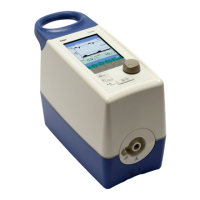Instructions for use Carina SW 3.2n 159
Principles of operation
Therapy types
Non-invasive ventilation
A mask connector without airflow must be used for
combinations of leakage valve and nasal mask,
mouth-nose mask or face mask.
Leakage is greater with non-invasive ventilation
than with invasive ventilation. Therefore, trigger de-
tection with automatic leakage detection is de-
signed for these special conditions.
A breathing gas humidifier or a heat and moisture
exchanger (HME) can be used for non-invasive ap-
plications.
Information on CO
2 rebreathing
With non-invasive ventilation CO
2 rebreathing by
the patient is possible under some conditions. If
CO
2 rebreathing represents a risk for the patient,
alternative ventilation methods must be applied.
As the pressure in the breathing circuit is reduced,
the risk of CO2 rebreathing increases. At low pres-
sure the flow through the leakage valve is reduced,
which means that it is possible that not all of the
CO
2 is discharged from the breathing circuit. Under
these conditions the volume of CO
2 rebreathed by
the patient is further increased with increased tidal
volume.
Invasive ventilation
With suitable patients the device can be used for in-
vasive ventilation (tube ventilation). Note the follow-
ing guidelines before use.
A breathing gas humidifier or a heat and moisture
exchanger (HME) can be used for invasive applica-
tions.
For information on configuration of the invasive
breathing circuit and the accessories for normal op-
eration see "Assembly and preparation".
Invasive ventilation with leakage valve
The breathing circuit uses a leakage valve for re-
moval of expiratory gases.
WARNING
Risk of patient injury
If a device fails, there is the risk of CO
2 re-
breathing.
If ventilation fails, remove the mask immedi-
ately. Instruct the patient on how to remove
the mask if the device fails.
WARNING
Risk of patient injury
When the inspiratory time is extended, the risk
of CO
2 rebreathing is increased. When the in-
spiratory time is longer, the expiratory time is
reduced, which means that less CO
2 is re-
moved from the breathing circuit before the
next respiratory cycle. Under these conditions
the volume of CO
2 rebreathed by the patient is
further increased with increased tidal volume.
Adjusting I:E ratio.

